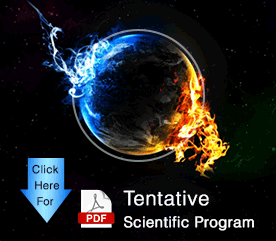
Biography
Biography: Don J Easterbrook
Abstract
Ice Ages and other significant climate changes show excellent correlations of global temperature with sunspot activity, total solar irradiance, production of radiocarbon and beryllium isotopes in the upper atmosphere, and cosmic rays entering the atmosphere. Periods of global cooling coincided with changes in these factors during the Oort, Wolf, Maunder, Dalton, 1880–1915, and 1945–1977 Solar Minimums. How are all of these factors interrelated? During the devastating cold of the Little Ice Age from 1650 to 1700, sun spot activity on the sun virtually ceased and total solar irradiance dropped. That this was not just a coincidence, is shown by the same thing happening during each of five other cold periods. Radiocarbon (14C) and beryllium (10Be) are isotopes produced in the upper atmosphere by colliding cosmic rays, so the more cosmic radiation, the greater the production of these isotopes. The amount of radiocarbon and beryllium produced can be measured and serves as an indicator of the amount of incoming cosmic radiation. Isotope measurements show that cosmic ray incidence was greater during each of the cold periods. Physicists have long known that cosmic rays passing thru the atmosphere produce ions (charged particles) that serve as nuclei for condensation of water vapor. In 1997, Svensmark and Friis-Christensen published the results of experiments at the Cern nuclear laboratory showing that cosmic rays do indeed generate condensation and suggested that increased cloudiness, produced by ionization in the atmosphere by cosmic rays, causes increased reflection of incoming solar energy and results in enough cooling of the atmosphere to cause climate changes. The geologic evidence of the relationships between global temperature, sunspot activity, total solar irradiance, production of radiocarbon and beryllium isotopes in the upper atmosphere, and cosmic ray incidence, provides a satisfactory explanation for the cause of both long-term and short-term climate changes.

